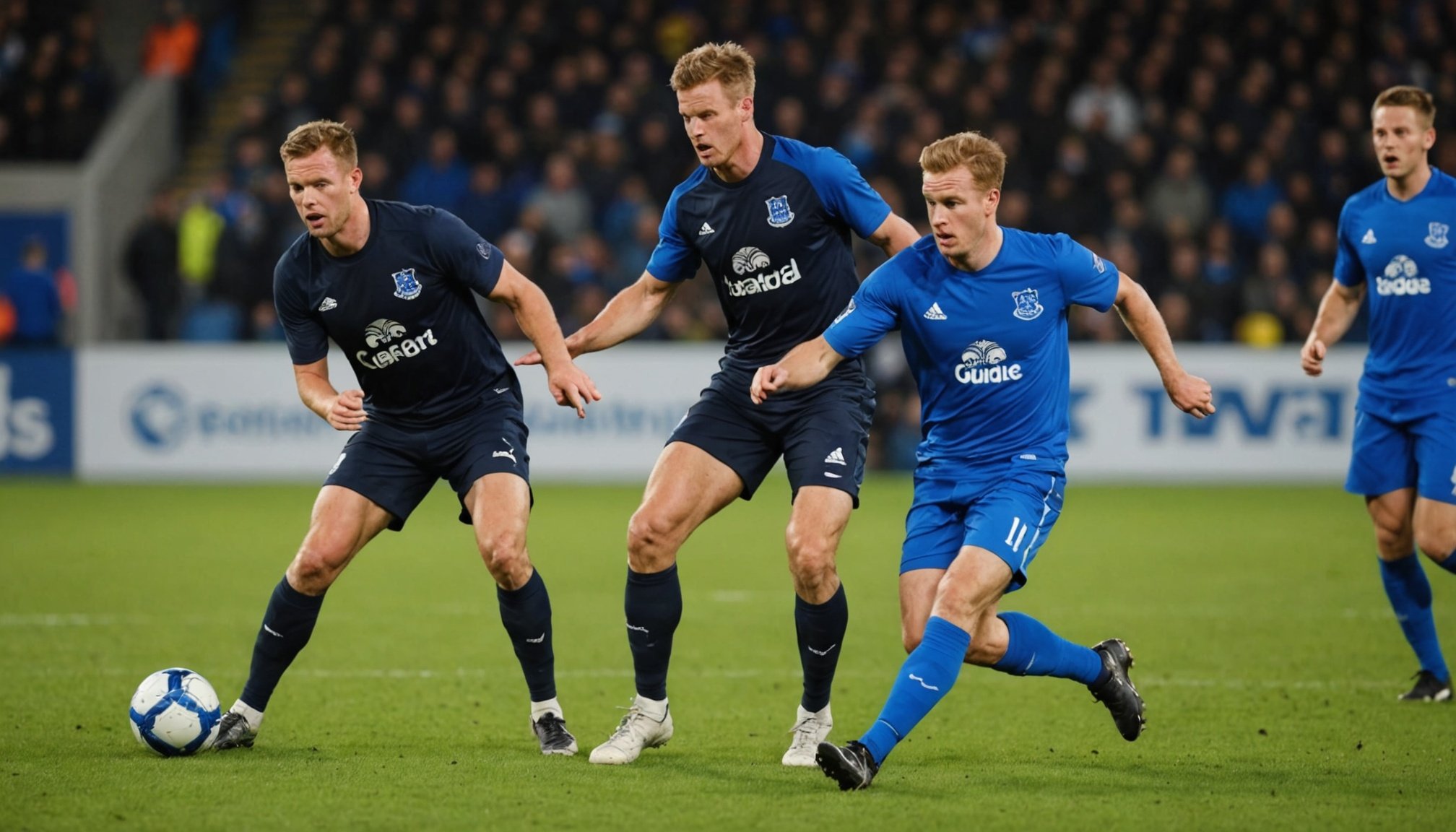Understanding Long-Term Injuries in Football
Long-term injuries in football are often due to high-impact collisions or repetitive stress affecting joints and ligaments. Common injuries include ACL tears, Achilles tendon ruptures, and stress fractures. Recognizing the signs of these prolonged injuries is crucial for timely intervention and effective recovery.
Football rehabilitation is multifaceted, addressing both psychological and physical impacts. Injuries can lead to frustration or depression, highlighting the need for psychological support. Players may experience reduced strength or mobility due to extended downtime. Addressing these issues involves comprehensive approaches that support not just the body but also the mind.
Additional reading : Reenergizing team morale: proven tactics for football coaches to motivate players post-defeat
Early recognition of injury symptoms and understanding their impact can significantly influence recovery success. Swelling, persistent pain, and instability are signs needing immediate attention. Ignoring these can lead to worsening of injuries and extended recovery times.
Collaboration between medical teams and players is vital in addressing long-term conditions. Comprehensive treatments integrate physical therapy, medical interventions, and mental health support. By understanding the complexities of long-term injuries and their implications, players and teams can better manage and mitigate their overall impact.
Have you seen this : Unleashing your football potential: key drills to enhance ball control and handling skills
Best Practices in Injury Management
Effective injury management in football is fundamental to ensuring comprehensive recovery and minimizing future risks. For optimal outcomes, rehabilitation programs must be structured but flexible, allowing adjustments tailored to each player’s unique healing trajectory. Core recovery strategies often include a blend of physiotherapy, personalized exercise regimes, and, in some cases, surgical interventions. These conduits are carefully calibrated by skilled medical professionals who guide the rehabilitation process, ensuring therapies effectively address individual needs while promoting safe and progressive recovery.
Collaborative efforts between the player, medical personnel, and coaching staff are critical. Coaches play a pivotal role in integrating rehabilitation techniques into team training, balancing the demands of recovery with strategic career management. This collaboration helps maintain a player’s tactical awareness and fitness levels.
Individualized recovery plans are crucial for optimizing outcomes, as no two injuries or athletes are the same. Medical professionals—physiotherapists and sports doctors—craft these plans, focusing on strength rebuilding and functional skill restoration critical for a return to pre-injury performance levels. Regular assessments and adjustments ensure that recovery remains on track, avoiding potential setbacks and fostering a rapid return to peak form.
Psychological Support Techniques
In the landscape of football rehabilitation, psychological support is a cornerstone for facilitating recovery and resilience. Injured players often grapple with depression or anxiety, necessitating strategic emotional support. Mental health interventions are structured to stabilize emotional well-being, fostering a nurturing environment that promotes healing.
Motivation in recovery is paramount, with tailored approaches to maintain focus on progress. Setting realistic short-term goals can inspire encouragement, helping players track incremental achievements. Positive reinforcement and mindfulness practices can bolster a player’s morale, mitigating feelings of frustration.
Effective communication between coaches, players, and support staff is essential in building trust and understanding. Open communication fosters an atmosphere where concerns can be voiced and addressed promptly, preventing psychological barriers from hindering recovery. It allows for personalized feedback and acknowledgment of athletes’ emotional and physical states, vital in the psychological support process.
Furthermore, access to counselling services can be indispensable, providing a safe space for players to address psychological challenges. Incorporating mental resilience training in regular recovery programs can prepare players for the rigours of the game upon return. By prioritizing mental health, both the athlete’s performance and holistic recovery are supported comprehensively.
Evidence-Based Training Methods
Implementing evidence-based training methods is essential for performance enhancement and effective rehabilitation post-injury. These methods are grounded in research, ensuring that each exercise is beneficial and safe for recovering athletes. Incorporating rehabilitation exercises into regular training routines is crucial. These exercises focus on rebuilding strength, mobility, and endurance, helping players safely transition back to competitive play.
To monitor progress, it’s important to track metrics such as range of motion, strength gains, and endurance levels. Adjusting training intensity based on recovery status prevents re-injury and supports continuous improvement. Incorporating both aerobic and anaerobic exercises ensures comprehensive development, addressing all aspects of physical fitness.
Monitoring recovery is a collaborative effort involving coaches, physiotherapists, and medical professionals, ensuring training programs remain aligned with the player’s health status. By employing these methods, players can achieve a smooth return to competitive play, minimizing long-term impacts on performance.
Finally, regularly updating training plans in response to a player’s recovery journey is vital. This adaptable approach facilitates personalized progress, allowing for adjustments that cater to evolving needs while maintaining focus on complete rehabilitation and optimal performance.
Case Studies of Successful Rebuilding
Football is a sport where long-term injuries can significantly impact players’ careers. Case studies showcasing success stories of players who have triumphantly returned from such injuries provide valuable insights. For instance, a renowned Premier League player recovered from an ACL tear through a meticulous rehabilitation plan, emphasising personalized recovery strategies.
Learning from these case studies, it’s evident that successful recovery examples require a combination of tailored physical therapy, consistent medical oversight, and psychological support. In one UK-based football club, collaboration among medical professionals led to innovative approaches in managing long-term injuries, offering lessons that resonate across the sport’s landscape.
One notable case involved a player integrating rehabilitation techniques with evidence-based training, successfully regaining pre-injury performance levels. These examples underline the importance of individualized recovery plans, demonstrating how nuanced strategies can expedite recovery.
Comparing different approaches, those prioritizing holistic management and strong coach-medical staff communication saw more favourable outcomes. Players benefitted from a holistic recovery approach, showcasing the necessity for long-term support. Such case studies highlight the evolving methodologies in recovering from significant injuries and emphasize how they can inspire future practices in injury management across football.
Collaboration Between Coaches and Medical Professionals
Effective collaboration between coaches and medical professionals is a cornerstone of successful injury management in football. This partnership ensures a holistic recovery approach that addresses both the physical and psychological aspects of rehabilitation. By combining their expertise, these professionals can create a nurturing environment for injured players, maximising their chances of a full recovery.
Strategies to foster effective collaboration include establishing regular communication protocols to keep all parties informed about a player’s progress and any necessary adjustments to their rehabilitation plan. Such protocols ensure that the transition from recovery to regular play is smooth and well-managed.
Coaches and physiotherapists should collaborate to integrate rehabilitation techniques seamlessly into training regimens. By doing so, they help maintain the player’s fitness and technical skills throughout their recovery journey. This integration involves adjusting training intensity and activities based on the player’s recovery status, preventing setbacks while promoting continuous improvement.
Furthermore, involving medical staff in team meetings and strategic planning can enhance the effectiveness of injury management. By aligning medical insights with training goals, coaches and medical professionals can better support players, creating a cohesive and supportive team environment that prioritizes health and performance.
Long-Term Monitoring and Support
Footballers returning from injury require tailored long-term support to ensure a successful reintegration into the team. Monitoring a player’s recovery trajectory is critical, allowing for adaptations that optimise their return to pre-injury performance levels. This involves continuous assessment of physical and psychological health, focusing on key metrics such as strength, flexibility, and mental readiness to play competitively.
Implementing adaptive training programs accommodates fluctuations in a player’s recuperation journey. Such programs are essential, adjusting intensity and type of exercise based on recovery pace and individual needs. This approach not only prevents re-injury but also fosters an environment where athletes can progressively regain full capability.
In this sustained support system, player monitoring plays a pivotal role. Medical teams frequently coordinate with coaching staff to review health assessments and training outcomes. This collaborative effort ensures real-time feedback and reinforces strategies to tackle any emerging issues, thereby enhancing overall effectiveness.
Providing continued rehabilitation is not just about physical recovery; it incorporates psychological support to tackle challenges such as anxiety or loss of confidence. Techniques like goal setting and positive reinforcement are employed, nurturing a player’s motivation and commitment during their comeback phase. This comprehensive strategy ensures a resilient return to the field.











